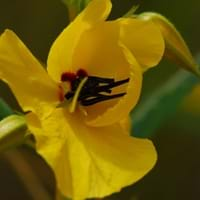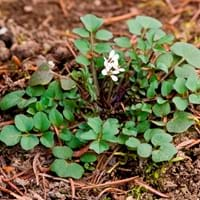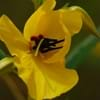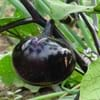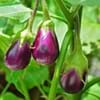Origin
Mediterranean
Europe, Asia
Types
Chamaecrista fasciculata Greene fasciculata, Chamaecrista fasciculata Greene macrosperma
Admiral Pepper,Bell Pepper,Mohawk Pepper,Yolo Wonder Pepper
Habitat
Dry areas, Open areas, Upland sand prairies, Upland savannas
Cropland, Oil fields, Waste areas
USDA Hardiness Zone
Not Available
4-9
AHS Heat Zone
12-1
Not Available
Sunset Zone
A1, A2, A3, H1, H2, 1a, 1b, 2a, 2b, 3a, 3b, 4, 5, 6, 7, 8, 9, 10, 11, 12, 13, 14, 15, 16, 17, 18, 19, 20, 21, 22, 23, 24
Not Available
Habit
Vining/Climbing
Clump-Forming
Minimum Width
Not Available
Flower Color
White, Pink, Lavender
White
Flower Color Modifier
Bicolor
Not Available
Fruit Color
Green
Green, Tan
Leaf Color in Spring
Green, Sea Green, Gray Green
Green
Leaf Color in Summer
Not Available
Not Available
Leaf Color in Fall
Green, Blue Green, Gray Green
Green
Leaf Color in Winter
Green, Blue Green, Gray Green
Green
Leaf Shape
Compound
Egg-shaped
Plant Season
Spring, Fall, Winter
Not Available
Sunlight
Full Sun, Partial Sun
Full Sun, Partial Sun
Growth Rate
Fast
Very Fast
Type of Soil
Clay, Loam, Sand
Clay, Loam, Sand
The pH of Soil
Neutral
Acidic, Neutral, Alkaline
Soil Drainage
Well drained
Well drained
Bloom Time
Early Spring, Spring, Late Spring, Fall, Late Fall, Early Winter, Winter, Late Winter
Early Spring, Spring, Late Spring, Late Fall, Early Winter, Winter, Late Winter
Tolerances
Drought
Pollution
Where to Plant?
Ground
Ground, Pot
How to Plant?
Seedlings
Stem Planting, Transplanting
Plant Maintenance
Medium
Medium
Watering Requirements
Needs more water during establishment, Water deeply about once a week
Prefer drip-irrigation instead of Over-head watering, Water Deeply
In Summer
Lots of watering
Lots of watering
In Spring
Moderate
Moderate
In Winter
Average Water
Average Water
Soil pH
Neutral
Acidic, Neutral, Alkaline
Soil Type
Clay, Loam, Sand
Clay, Loam, Sand
Soil Drainage Capacity
Well drained
Well drained
Sun Exposure
Full Sun, Partial Sun
Full Sun, Partial Sun
Pruning
Remove damaged leaves, Remove dead branches, Remove dead leaves
Prune ocassionally, Prune to control growth
Fertilizers
All-Purpose Liquid Fertilizer
All-Purpose Liquid Fertilizer
Pests and Diseases
Not Available
Not Available
Plant Tolerance
Drought
Drought
Flowers
Showy
Insignificant
Flower Petal Number
Single
Single
Foliage Texture
Medium
Fine
Foliage Sheen
Matte
Not Available
Attracts
Not Available
Not Available
Allergy
Mild Allergen
Not Available
Aesthetic Uses
Cottage Garden
Not Used For Aesthetic Purpose
Beauty Benefits
Not Available
Not Available
Environmental Uses
Air purification
Air purification
Medicinal Uses
Nausia, Urinary tract problems
Not Available
Part of Plant Used
Leaves, Seeds
Not Available
Other Uses
Dried heads are used in floristry, Food for animals, Food for insects
Unknown
Used As Indoor Plant
No
No
Used As Outdoor Plant
Yes
Yes
Garden Design
Container, Edible, Herb, Vegetable, Vine
Not Available
Botanical Name
Chamaecrista fasciculata
CARDAMINE hirsuta
Common Name
Sleeping Plant, prairie partridge pea, showy partridge pea, prairie senna, large-flowered sensitive-pea,dwarf cassia, partridge pea senna, locust weed,golden cassia
Hairy Bittercress
In Hindi
Partridge Pea
बालों वाली Bittercress
In German
Partridge Pea
Hairy Bittercress
In French
Partridge Pea
Bittercress Poilu
In Spanish
Partridge Pea
Bittercress Peludo
In Greek
πέρδικα μπιζέλι
τριχωτές Bittercress
In Portuguese
Partridge Pea
Bittercress cabeludo
In Polish
Partridge Pea
włochaty Bittercress
In Latin
Partridge Pea
pilosus bittercress
Phylum
Vascular plant
Magnoliophyta
Class
Magnoliopsida
Magnoliopsida
Order
Fabales
Brassicales
Family
Fabaceae
Brassicaceae
Genus
Chamaecrista
Cardamine
Clade
Angiosperms, Eudicots, Rosids
Not Available
Tribe
Cassieae
Not Available
Subfamily
Not Available
Not Available
Number of Species
Not Available
Not Available
Season and Care of Partridge Pea and Hairy Bittercress
Season and care of Partridge Pea and Hairy Bittercress is important to know. While considering everything about Partridge Pea and Hairy Bittercress Care, growing season is an essential factor. Partridge Pea season is Spring, Fall and Winter and Hairy Bittercress season is Spring, Fall and Winter. The type of soil for Partridge Pea is Clay, Loam, Sand and for Hairy Bittercress is Clay, Loam, Sand while the PH of soil for Partridge Pea is Neutral and for Hairy Bittercress is Acidic, Neutral, Alkaline.
Partridge Pea and Hairy Bittercress Physical Information
Partridge Pea and Hairy Bittercress physical information is very important for comparison. Partridge Pea height is 30.00 cm and width Not Available whereas Hairy Bittercress height is 10.20 cm and width 5.10 cm. The color specification of Partridge Pea and Hairy Bittercress are as follows:
Partridge Pea flower color: White, Pink and Lavender
Partridge Pea leaf color: Green, Sea Green and Gray Green
Hairy Bittercress flower color: White
- Hairy Bittercress leaf color: Green
Care of Partridge Pea and Hairy Bittercress
Care of Partridge Pea and Hairy Bittercress include pruning, fertilizers, watering etc. Partridge Pea pruning is done Remove damaged leaves, Remove dead branches and Remove dead leaves and Hairy Bittercress pruning is done Prune ocassionally and Prune to control growth. In summer Partridge Pea needs Lots of watering and in winter, it needs Average Water. Whereas, in summer Hairy Bittercress needs Lots of watering and in winter, it needs Average Water.
